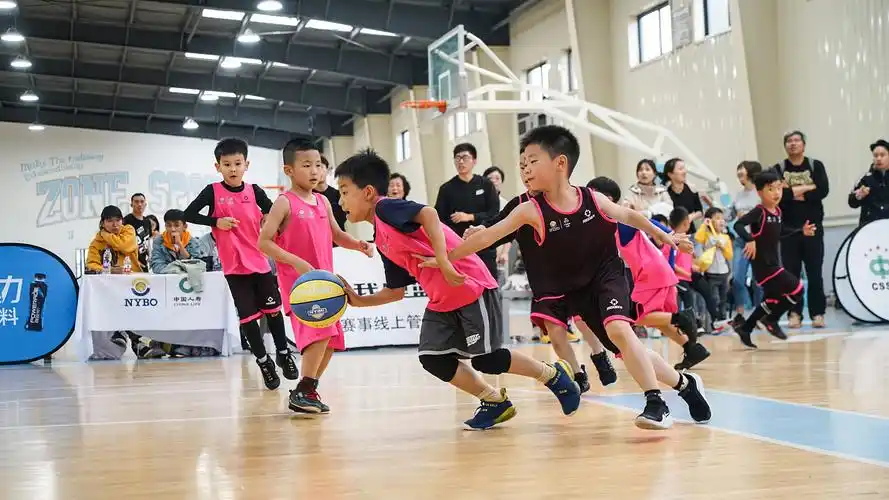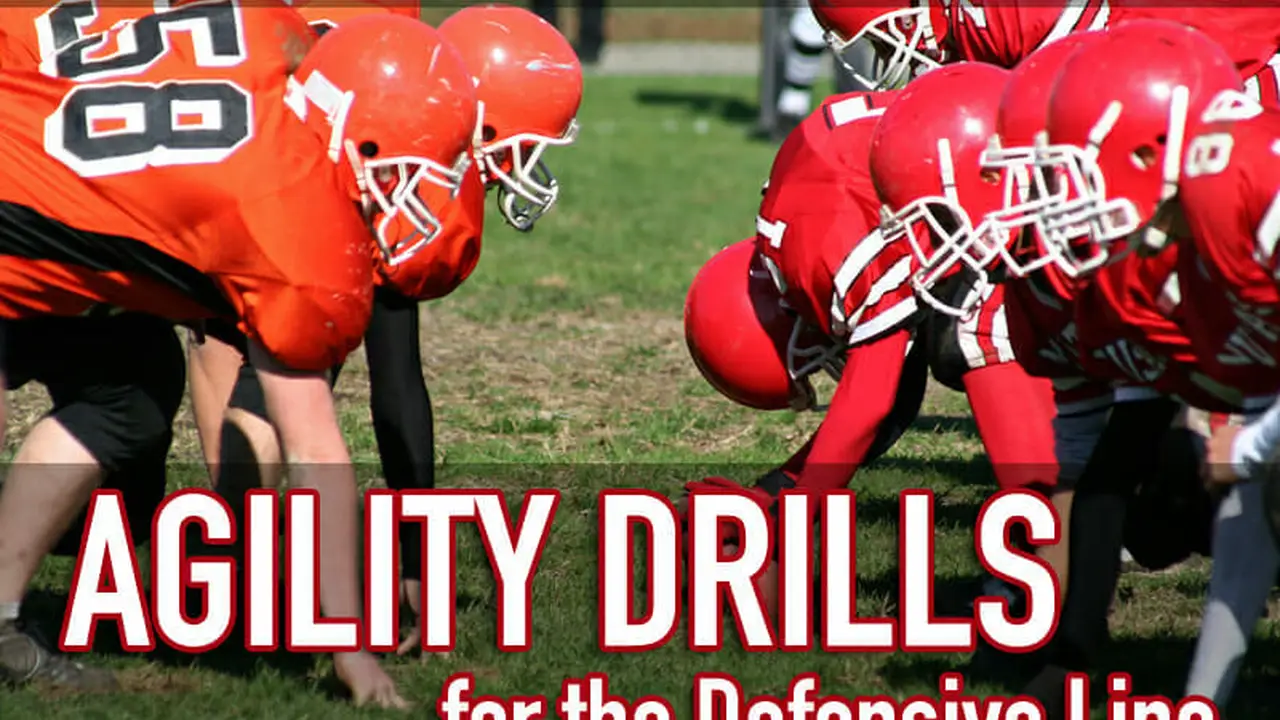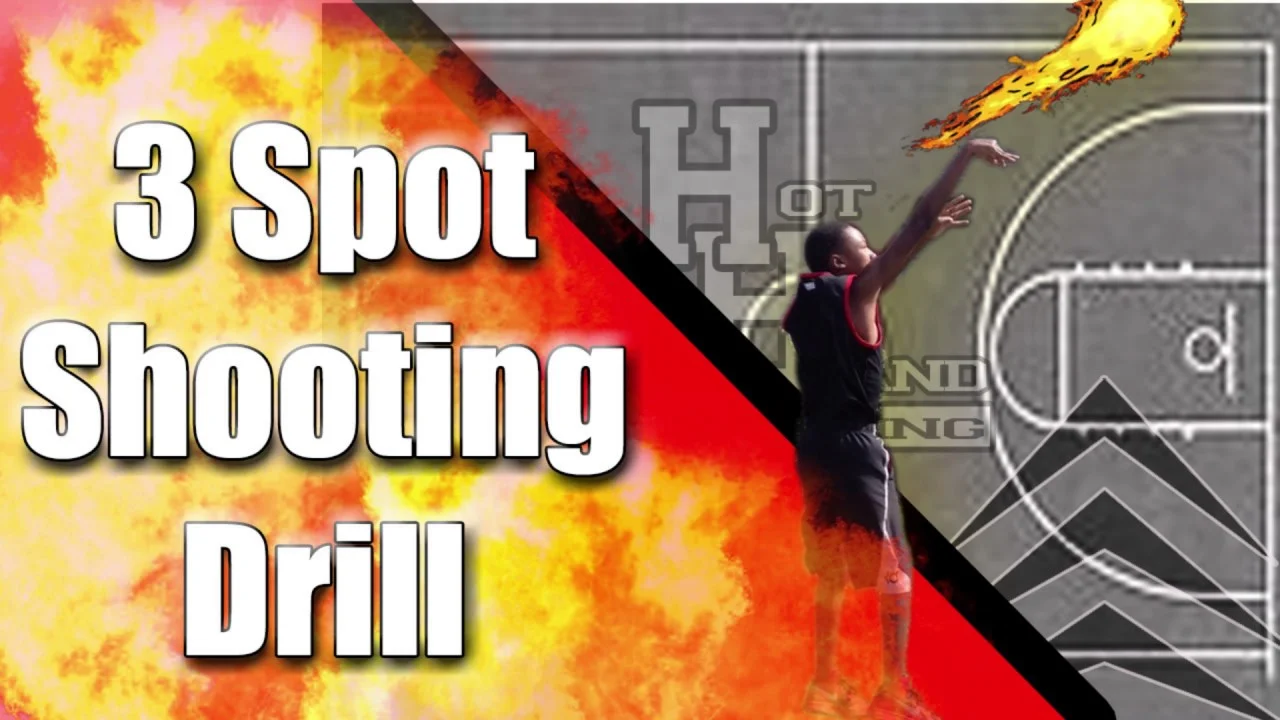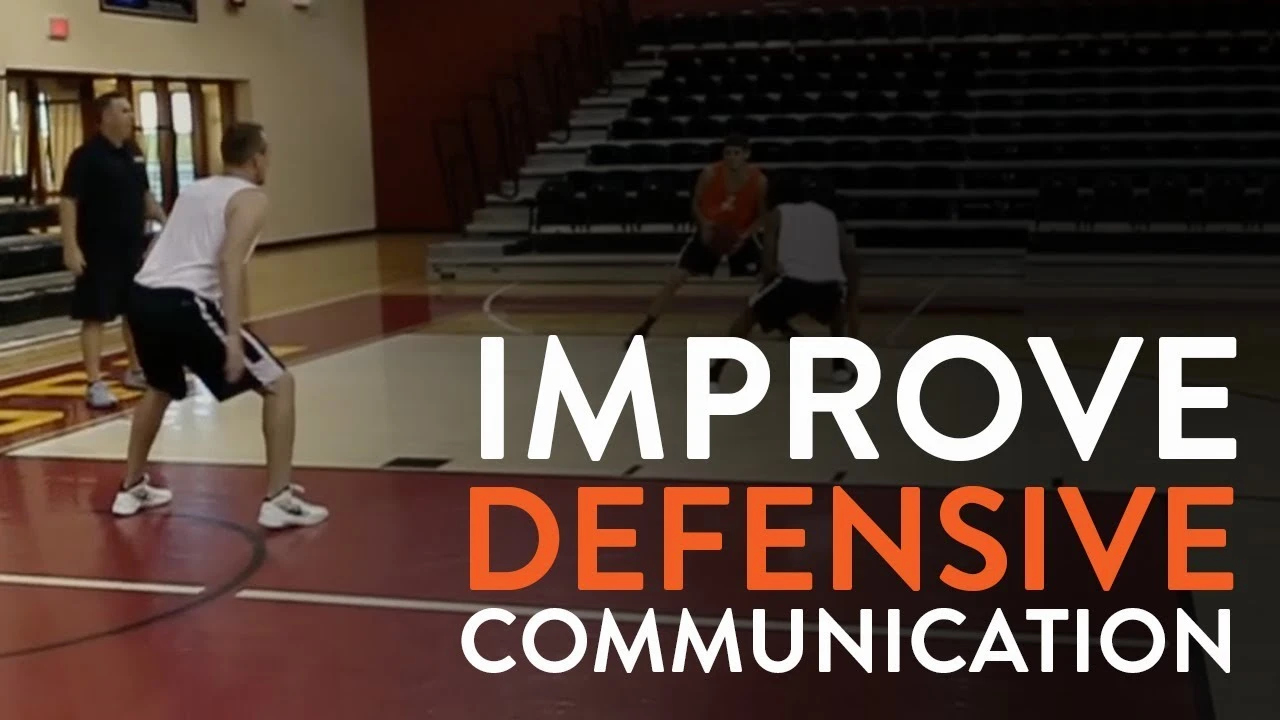Help Defense_ Supporting Your Teammates

Understanding the Core Principles of Help Defense in Basketball
Help defense is a fundamental defensive strategy in basketball, designed to provide support to teammates who are being beaten or are in vulnerable positions. It involves a coordinated effort where players rotate and provide assistance, effectively disrupting the opponent's offensive flow. The core principle revolves around anticipating potential breakdowns in individual defense and proactively filling gaps to prevent easy scoring opportunities. This requires a high level of communication, spatial awareness, and a willingness to sacrifice individual assignments for the greater good of the team.
The effectiveness of help defense hinges on several key factors. First, players must possess a strong understanding of their teammates' defensive tendencies and vulnerabilities. Knowing when a teammate is likely to be beaten off the dribble or needs assistance in the post is crucial for initiating help defense rotations. Second, timely and accurate communication is paramount. Players must constantly communicate with each other, alerting teammates to potential threats and signaling when help is needed. This communication can be verbal or non-verbal, using visual cues and body language to convey information quickly and efficiently. Third, proper positioning is essential. Players must position themselves in a way that allows them to provide help without leaving their own assignments vulnerable. This often involves splitting the difference between their assigned player and the player needing help, allowing them to react quickly in either direction. Finally, a strong understanding of defensive principles, such as denying penetration, protecting the paint, and closing out on shooters, is necessary to execute help defense effectively.
The Role of Individual Defenders in a Help Defense System
While help defense is a team-oriented strategy, the role of individual defenders is crucial. Each player must understand their specific responsibilities within the system and be prepared to execute them effectively. The primary responsibility of each defender is to contain their assigned player and prevent them from scoring or creating scoring opportunities for their teammates. However, in a help defense system, defenders must also be aware of their surroundings and be ready to provide assistance when needed.
The defender guarding the ball handler has the primary responsibility of containing the dribble and preventing penetration. They must use their footwork, positioning, and hand activity to force the ball handler towards the sideline or away from the basket. They must also be aware of potential driving lanes and be prepared to cut off the ball handler's path to the basket. The defenders guarding off-ball players must be aware of their assigned player's tendencies and be prepared to deny them the ball or contest their shots. They must also be aware of the position of the ball and be ready to rotate and provide help when needed. This often involves anticipating passes and intercepting them, or stepping in to take a charge if a teammate is beaten off the dribble.
Effective individual defense within a help defense system requires a high level of discipline and focus. Defenders must be able to maintain their concentration throughout the game and resist the temptation to gamble or take unnecessary risks. They must also be willing to sacrifice their individual statistics for the good of the team. This may involve giving up open shots to help a teammate or taking a charge to prevent a basket. Ultimately, the success of a help defense system depends on the willingness of each individual defender to embrace their role and contribute to the team's overall defensive effort.
Specific Help Defense Scenarios and Techniques
Help defense manifests in various scenarios, each requiring specific techniques. Let's explore some common situations and the appropriate defensive responses.
Help Defense Against Post Players
Defending post players effectively requires a coordinated effort. Double-teaming the post can be a valuable strategy, but it's crucial to execute it properly. The player providing the help should come from the weak side (the side away from the ball) to avoid leaving an open shooter on the strong side. The helper must be quick and decisive, applying pressure on the post player and forcing them to make a difficult pass. The other defenders must be ready to rotate and cover the open players.
Another effective technique is fronting the post. This involves positioning the defender in front of the post player to deny them the ball. However, fronting the post leaves the defender vulnerable to a lob pass over the top. Therefore, a help defender must be positioned behind the post player to intercept the lob and prevent an easy basket. This requires excellent communication and timing between the two defenders.
Help Defense Against Driving Players
When a player drives to the basket, help defense becomes critical. The help defender should step in front of the driving player to cut off their path to the basket. This forces the driver to either pass the ball or attempt a difficult shot. The help defender must be prepared to take a charge if necessary, but they must also be careful not to foul the driver. The other defenders must be ready to rotate and cover the open players.
Another technique is to "show" help and then recover. This involves briefly stepping in front of the driving player to deter them from attacking the basket, and then quickly recovering to guard your assigned player. This can be an effective way to disrupt the driver's rhythm and force them to make a mistake. However, it's important to recover quickly to avoid leaving your assigned player open for a shot.
Help Defense Against Pick and Roll
The pick and roll is a common offensive play that can be difficult to defend. There are several techniques for defending the pick and roll, including switching, hedging, and trapping. Switching involves having the two defenders guarding the players involved in the pick and roll switch assignments. This can be effective, but it requires good communication and athleticism from both defenders.
Hedging involves having the defender guarding the screener step out to temporarily impede the ball handler's progress. This gives the defender guarding the ball handler time to recover and get back in front of the ball. Trapping involves having two defenders double-team the ball handler after they come off the screen. This can be an effective way to force a turnover, but it leaves the other offensive players open. The best technique for defending the pick and roll depends on the specific situation and the strengths and weaknesses of the players involved.
Drills and Exercises to Improve Help Defense Skills
Improving help defense requires consistent practice and repetition. Here are some drills and exercises that can help players develop the necessary skills and instincts.
The 2-on-2 Shell Drill
This drill focuses on developing communication and rotation skills. Two offensive players start on the perimeter, while two defensive players guard them. The offensive players pass the ball back and forth, trying to create an open shot. The defensive players must communicate with each other and rotate to cover the open player. The drill can be modified to include different offensive sets and defensive rotations.
The Help and Recover Drill
This drill focuses on developing the ability to provide help and then quickly recover to guard your assigned player. One offensive player starts with the ball at the top of the key. A defensive player guards them. A second offensive player starts on the wing. The offensive player with the ball drives to the basket. The defensive player guarding the offensive player on the wing steps in front of the driver to provide help, and then quickly recovers to guard their assigned player. The drill can be modified to include different driving lanes and recovery angles.
The Charge Drill
This drill focuses on developing the ability to take a charge. An offensive player starts with the ball at the free throw line. A defensive player stands in the restricted area. The offensive player drives to the basket. The defensive player steps in front of the driver and takes a charge. The drill can be modified to include different driving angles and offensive moves.
Film Study and Game Analysis
Analyzing game film is a crucial aspect of improving help defense. Coaches can use film to highlight both successes and failures in help defense situations. Players can learn from their mistakes and identify areas where they can improve their communication, positioning, and rotations. Film study can also be used to scout opponents and identify their offensive tendencies. By understanding their opponents' strengths and weaknesses, teams can develop specific help defense strategies to counter their offensive attacks.
Analyzing NBA Help Defense Strategies
To further illustrate the principles of help defense, let's examine how some of the top NBA teams utilize this strategy.
The Golden State Warriors' Help Defense Philosophy
The Golden State Warriors, known for their offensive prowess, also employ a sophisticated help defense system. Their emphasis is on quick rotations and constant pressure on the ball. They often double-team the post and aggressively trap ball handlers, forcing turnovers and disrupting the opponent's offensive flow. Their success stems from their players' high basketball IQ, athleticism, and commitment to team defense.
The Boston Celtics' Versatile Defensive Approach
The Boston Celtics are renowned for their versatile and adaptable defense. They excel at switching on pick and rolls, denying penetration, and protecting the paint. Their help defense is characterized by its discipline and attention to detail. They rarely over-help, ensuring that they don't leave open shooters or create unnecessary rotations. Their success is rooted in their players' understanding of defensive principles and their willingness to work together as a unit.
The Toronto Raptors' Aggressive Defensive Style
The Toronto Raptors are known for their aggressive and physical defense. They often use their length and athleticism to disrupt the opponent's offense. Their help defense is characterized by its intensity and pressure. They often blitz ball handlers and aggressively contest shots, forcing turnovers and creating difficult scoring opportunities. Their success is based on their players' relentless effort and their commitment to playing hard on every possession.
The Impact of Communication on Effective Help Defense
Communication is the lifeblood of effective help defense. Without clear and concise communication, rotations will be slow, assignments will be missed, and scoring opportunities will be created for the opponent. Communication must be constant and proactive, not just reactive. Players should be communicating with each other before the play even develops, anticipating potential breakdowns and alerting teammates to potential threats.
There are several types of communication that are essential for effective help defense. Verbal communication is crucial for alerting teammates to potential dangers and coordinating rotations. Non-verbal communication, such as hand signals and body language, can also be used to convey information quickly and efficiently. Eye contact is another important form of communication. By making eye contact with teammates, players can ensure that they are on the same page and that they are aware of each other's positions and responsibilities.
Effective communication requires trust and understanding between teammates. Players must trust that their teammates will be in the right position and that they will execute their assignments effectively. They must also understand each other's strengths and weaknesses, and be willing to adjust their own play to compensate for their teammates' limitations. Building this level of trust and understanding takes time and effort, but it is essential for creating a cohesive and effective defensive unit.
Advanced Help Defense Concepts and Strategies
Beyond the fundamentals, help defense involves advanced concepts that can elevate a team's defensive prowess.
Anticipating Offensive Movements
Predicting the opponent's next move is a key aspect of advanced help defense. This involves studying game film, understanding the opponent's offensive tendencies, and anticipating their plays. By anticipating the opponent's movements, defenders can position themselves in the right place at the right time, making it more difficult for the opponent to score.
Reading the Eyes of the Ball Handler
The eyes of the ball handler can provide valuable clues about their intentions. By reading the ball handler's eyes, defenders can anticipate their passes and intercept them. They can also anticipate their drives to the basket and step in to take a charge. This requires a high level of concentration and attention to detail.
Utilizing Deception and Misdirection
Deception and misdirection can be used to disrupt the opponent's offensive flow and create turnovers. This involves using subtle movements and gestures to mislead the opponent and force them to make mistakes. For example, a defender might fake a double-team to force the ball handler to pass the ball, or they might fake a steal to force the ball handler to dribble into a trap.
Adapting to Different Offensive Styles
Different offensive styles require different help defense strategies. For example, a team that relies heavily on three-point shooting will require a different help defense strategy than a team that relies on post-up play. Defenders must be able to adapt their strategy to the specific offensive style of their opponent. This requires a deep understanding of defensive principles and a willingness to adjust their approach based on the situation.
The Importance of Physical Conditioning for Help Defense
Physical conditioning plays a vital role in the effectiveness of help defense. Players must possess the necessary stamina, speed, agility, and strength to execute help defense effectively. Stamina is essential for maintaining a high level of intensity throughout the game. Players must be able to run, jump, and defend for extended periods without tiring. Speed and agility are crucial for rotating quickly and covering ground effectively. Players must be able to move laterally, change direction, and react quickly to the opponent's movements. Strength is important for battling for position in the post and contesting shots. Players must be able to hold their ground against bigger and stronger opponents.
A comprehensive conditioning program should include a combination of cardiovascular training, strength training, and agility training. Cardiovascular training can improve stamina and endurance. Strength training can build muscle mass and improve strength. Agility training can improve speed, quickness, and coordination. The specific exercises and drills that are included in the conditioning program should be tailored to the individual needs and goals of the players.
In addition to physical conditioning, proper nutrition and hydration are also essential for maintaining peak performance. Players should eat a healthy diet that is rich in fruits, vegetables, and whole grains. They should also drink plenty of water to stay hydrated. Proper nutrition and hydration can help players recover from workouts and games, and they can also improve their overall energy levels.
The Mental Aspect of Help Defense
The mental aspect of help defense is just as important as the physical aspect. Players must possess the necessary focus, discipline, and mental toughness to execute help defense effectively. Focus is essential for maintaining concentration throughout the game. Players must be able to block out distractions and stay focused on their assignments. Discipline is crucial for following the defensive game plan and avoiding unnecessary risks. Players must be willing to sacrifice their individual statistics for the good of the team. Mental toughness is important for overcoming adversity and bouncing back from mistakes. Players must be able to stay positive and motivated even when things are not going their way.
Developing the mental aspect of help defense requires consistent effort and practice. Coaches can help players develop their focus, discipline, and mental toughness by setting clear expectations, providing constructive feedback, and creating a positive and supportive environment. Players can also work on developing their mental skills on their own by practicing visualization, meditation, and other mental techniques.
Help Defense and the Modern Game
The modern game of basketball, characterized by its emphasis on spacing, ball movement, and three-point shooting, has placed an even greater emphasis on help defense. With offenses becoming more sophisticated and players becoming more skilled, individual defense alone is often not enough to contain the opponent. Help defense is now an essential component of any successful defensive strategy.
The increased emphasis on three-point shooting has made help defense even more critical. Defenders must be able to rotate quickly and close out on shooters, preventing them from getting open looks. They must also be aware of the position of the ball and be ready to help defend against penetration. The increased emphasis on ball movement has also made help defense more challenging. Defenders must be able to anticipate passes and intercept them, or step in to take a charge if a teammate is beaten off the dribble.
To be successful in the modern game, teams must develop a sophisticated help defense system that is adaptable to different offensive styles. They must also have players who are skilled at communicating, rotating, and providing help. The teams that are able to master help defense will have a significant advantage over their opponents.
Product Recommendations for Enhancing Defensive Performance
Improving help defense involves not only strategy and training, but also the right equipment and resources. Here are some product recommendations that can aid in enhancing defensive performance:
Basketball Training Aids: SKLZ D-Man Basketball Defender
Description: The SKLZ D-Man is a portable, adjustable defender that simulates a real player on the court. It allows players to practice shooting over a defender, driving to the basket with a defender in the way, and working on help defense rotations.
Use Case: Coaches can use the D-Man to create realistic game situations during practice. Players can practice their closeouts, defensive slides, and help defense rotations with a simulated defender.
Product Comparison: Unlike static cones or dummies, the D-Man can be adjusted to different heights and positions, providing a more realistic simulation of a live defender. It's more versatile than traditional training aids.
Pricing: Typically ranges from $100 to $150, depending on the retailer.
Performance Apparel: Nike Pro Combat Hyperstrong Compression Shorts
Description: These compression shorts provide support and protection for key muscle groups, helping to reduce fatigue and improve performance during intense defensive drills and games.
Use Case: Players can wear these shorts during practices and games to help improve their endurance and reduce the risk of injury. The compression fabric helps to keep muscles warm and supported, allowing players to move more freely and explosively.
Product Comparison: Compared to regular athletic shorts, compression shorts offer superior muscle support and moisture-wicking properties. They also help to reduce chafing and improve blood flow.
Pricing: Typically ranges from $40 to $60, depending on the retailer.
Video Analysis Software: Hudl
Description: Hudl is a video analysis software that allows coaches and players to review game footage, analyze performance, and identify areas for improvement. It offers features such as tagging, drawing tools, and stat tracking.
Use Case: Coaches can use Hudl to break down game film and identify mistakes in help defense rotations. Players can use Hudl to review their own performance and learn from their mistakes. The software allows for detailed analysis of individual and team defensive performance.
Product Comparison: Compared to traditional video editing software, Hudl is specifically designed for sports analysis and offers features that are tailored to the needs of coaches and players. It also offers cloud storage and collaboration tools.
Pricing: Hudl offers various subscription plans, with pricing depending on the level of features and storage required. Contact Hudl directly for specific pricing information.
Agility Training Equipment: Agility Ladder
Description: An agility ladder is a flat ladder with evenly spaced rungs that is used to improve foot speed, agility, and coordination. It's a simple but effective tool for improving the quickness and agility needed for effective help defense.
Use Case: Players can use an agility ladder to perform a variety of footwork drills, such as lateral shuffles, forward runs, and in-and-out steps. These drills help to improve foot speed, agility, and coordination, which are essential for quick rotations and effective help defense.
Product Comparison: Compared to other agility training equipment, such as cones and hurdles, an agility ladder is relatively inexpensive and easy to set up and use. It's also highly portable, making it a convenient option for training on the go.
Pricing: Typically ranges from $20 to $40, depending on the length and quality of the ladder.
Resistance Bands: Theraband Resistance Bands
Description: Theraband resistance bands are elastic bands that provide resistance during exercise. They are used to improve strength, flexibility, and range of motion. They can be used to enhance defensive stance and movement.
Use Case: Players can use resistance bands to perform exercises such as lateral walks, squats, and lunges. These exercises help to strengthen the muscles used in defensive movements, improving stability and power. They are also beneficial for injury prevention.
Product Comparison: Compared to free weights, resistance bands are more portable and versatile. They can be used to perform a wide range of exercises, and they provide a constant level of resistance throughout the entire range of motion.
Pricing: Typically ranges from $10 to $20 per band, depending on the resistance level.
Case Studies: Help Defense in Action
Let's delve into specific game scenarios where effective help defense made a significant difference.
Case Study 1: The Game-Saving Block
In a crucial playoff game, Team A was leading by one point with seconds remaining. The opposing team's star player drove to the basket, seemingly poised to score the game-winning layup. However, a quick-thinking defender from Team A rotated from the weak side and executed a perfectly timed block, preventing the layup and securing the victory. This play highlighted the importance of anticipation, timing, and athleticism in help defense.
Case Study 2: Shutting Down the Post Player
In another game, Team B faced a team with a dominant post player. Team B implemented a double-team strategy, sending help defenders from the weak side to pressure the post player whenever they received the ball. This forced the post player to make difficult passes or take contested shots, effectively neutralizing their offensive threat and leading to a Team B victory.
Case Study 3: Disrupting the Pick and Roll
Team C faced a team that relied heavily on the pick and roll. Team C implemented a switching strategy, having the two defenders guarding the players involved in the pick and roll switch assignments. This disrupted the timing of the pick and roll and prevented the opposing team from generating easy scoring opportunities. Team C's ability to effectively defend the pick and roll was a key factor in their victory.
:max_bytes(150000):strip_icc()/277019-baked-pork-chops-with-cream-of-mushroom-soup-DDMFS-beauty-4x3-BG-7505-5762b731cf30447d9cbbbbbf387beafa.jpg)






